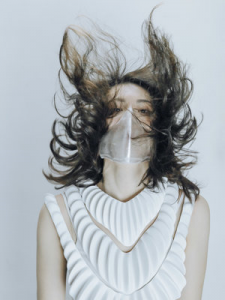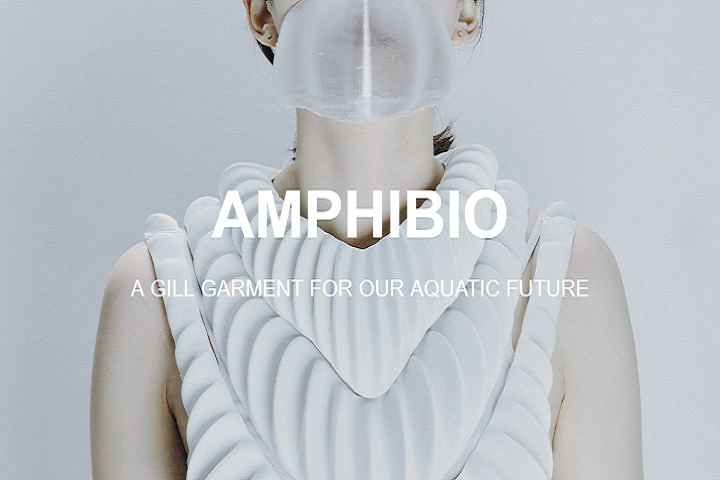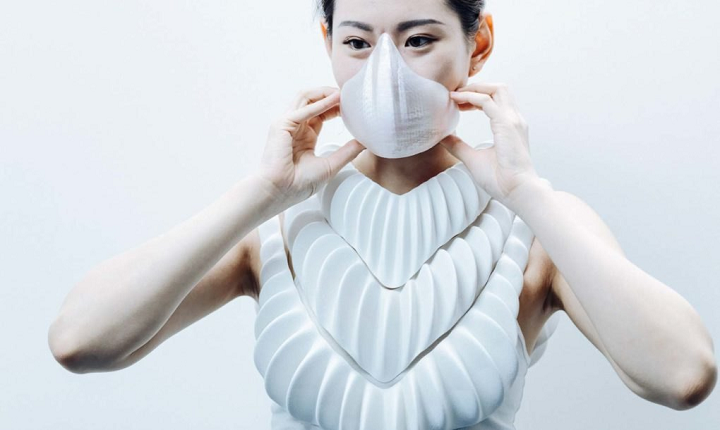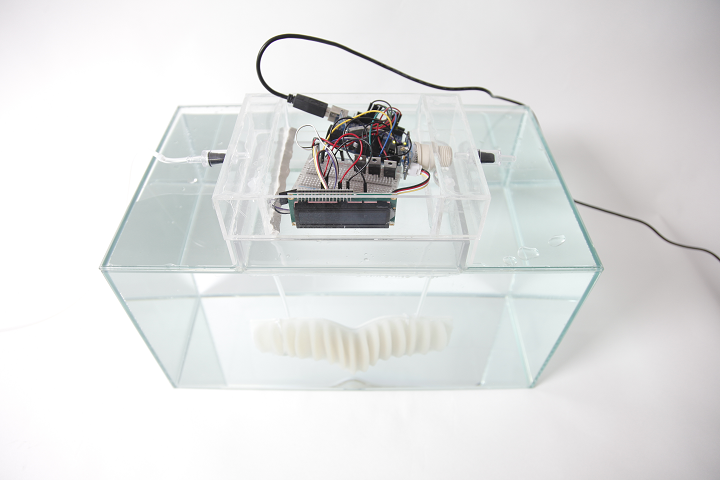In 1995, American actor Kevin Costner starred in a movie called Waterworld, and whatever your thoughts on the film, which is widely considered to be something of a flop, the overall concept is an interesting one. In the future, the Earth has been almost completely submerged due to the polar ice caps melting, and people pretty much live on boats. The science is a little questionable – the ice caps melting likely wouldn’t cover the entire world in water, and Costner would likely not be afflicted with a mutation that gave him webbed toes and gills.
 However, the idea that all of Earth may one day be underwater is not an unheard of concept…nor are humans with gills, albeit 3D printed ones. Japanese designer and material scientist Jun Kamei, a graduate of the Royal College of Art (RCA), believes that complications will materialize due to increasing sea levels, and affect the lives of up to three billion people around the world.
However, the idea that all of Earth may one day be underwater is not an unheard of concept…nor are humans with gills, albeit 3D printed ones. Japanese designer and material scientist Jun Kamei, a graduate of the Royal College of Art (RCA), believes that complications will materialize due to increasing sea levels, and affect the lives of up to three billion people around the world.
Kamei wrote on his website, “By 2100, a temperature rise of 3.2° Celsius is predicted to happen, causing a sea-level rise affecting between 500 million and three billion people, and submerging the mega-cities situated in the coastal areas.”
That’s why Kamei invented Amphibio, a patent-pending, 3D printed underwater breathing device. The artist hopes that people in the future who are affected by rising oceans can use Amphibio to work with, rather than against, nature in the submerged parts of the world.
The Amphibio device, which functions as a gill, is somewhere between scuba diving and free diving equipment. It could be used to help people remain underwater for longer periods of time than are currently possible with free diving, while also reducing the equipment required for scuba diving.
The idea behind the device, also referred to by Kamei as a garment, was inspired by the way that aquatic insects trap air. These water diving bugs have a thin layer of air on the surface of their super-hydrophobic skin, which is used as a gill that can exchange harmful gases for good ones; this allows the insects to breathe underwater.
 In the same respect, Amphibio’s hydrophobic, microporous material will, in theory, allow the wearer to extract oxygen from the surrounding water, while removing carbon dioxide at the same time. Thanks to 3D printing, the unique material filament, which Kamei developed himself, can be shaped into the complex form that makes up the underwater breathing apparatus.
In the same respect, Amphibio’s hydrophobic, microporous material will, in theory, allow the wearer to extract oxygen from the surrounding water, while removing carbon dioxide at the same time. Thanks to 3D printing, the unique material filament, which Kamei developed himself, can be shaped into the complex form that makes up the underwater breathing apparatus.
Together with a team from the RCA-IIS Tokyo Design Lab – an international collaborative initiative between the RCA and the University of Tokyo – Kamei returned to his alma mater to build the device, which is made up of the gill assembly and an attached respiratory mask.
Kamei thinks that his 3D printed Amphibio will be “essential” to future generations that will be inhabiting a “flooded world.” The attractive device will be a source of comfort for people who will be forced to spend as much time in the water as out of it.
While Kamei’s working Amphibio prototype doesn’t produce enough oxygen at this stage to sustain a person, his next steps include testing the device to support underwater breathing at human scale where a gill, with at least 32 m2, can support a person’s oxygen consumption while submerged.
While the idea of a flooded world is dystopian in nature, Kamei has a more optimistic idea of a submerged future. He sees people using his 3D printed underwater breathing apparatus to live an amphibious lifestyle, putting the gill on to swim to the town square (lake?) or to take a nighttime dive. Kamei also hopes that, as 3D printing continues to become more available in society, people will easily be able to 3D print garments, like his Amphibio, that are tailored precisely to their own body shapes…making the future a more comfortable place, if not a more wet one.
Discuss this story and other 3D printing topics at 3DPrintBoard.com or share your thoughts in the Facebook comments below.
[Source: inhabitat / Images: Jun Kamei]Subscribe to Our Email Newsletter
Stay up-to-date on all the latest news from the 3D printing industry and receive information and offers from third party vendors.
You May Also Like
Gorilla Sports GE’s First 3D Printed Titanium Cast
How do you help a gorilla with a broken arm? Sounds like the start of a bad joke a zookeeper might tell, but it’s an actual dilemma recently faced by...
Nylon 3D Printed Parts Made More Functional with Coatings & Colors
Parts 3D printed from polyamide (PA, Nylon) 12 using powder bed fusion (PBF) are a mainstay in the additive manufacturing (AM) industry. While post-finishing processes have improved the porosity of...
$25M to Back Sintavia’s Largest Expansion of Metal 3D Printing Capacity Since 2019
Sintavia, the digital manufacturing company specializing in mission-critical parts for strategic sectors, announced a $25 million investment to increase its production capacity, the largest expansion to its operations since 2019....
Velo3D Initiates Public Offering in a Bid to Strengthen Financial Foundations and Drive Future Growth
Velo3D (NYSE: VLD) has been among a number of publicly traded 3D printing firms that have attempted to weather the current macroeconomic climate. After posting a challenging financial report for 2023,...


































